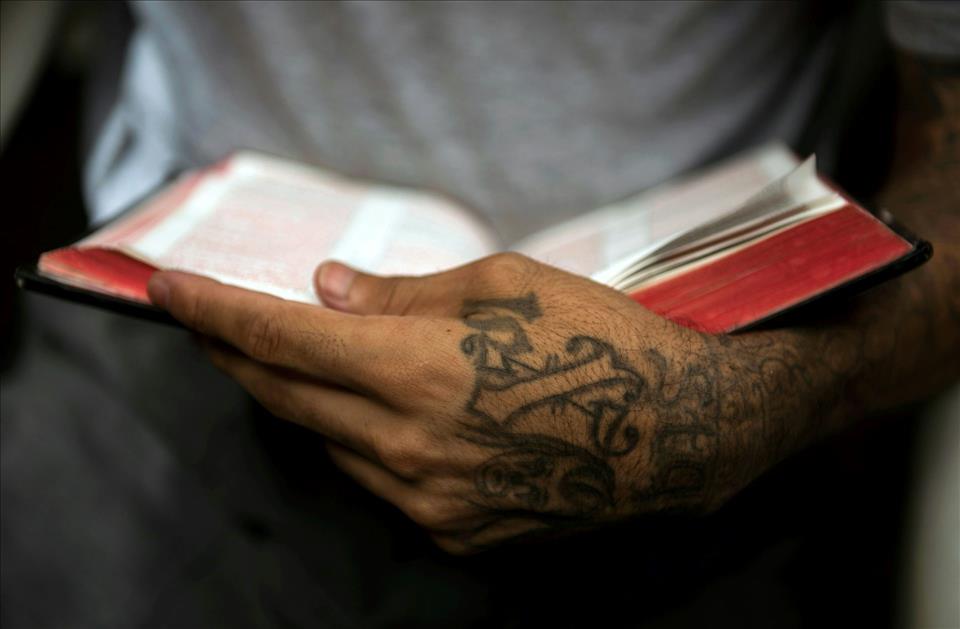
Gangs, Guns And Bibles In Cape Town: What It Takes To Quit A Life Of Violence And Stay Alive
“Getting into gangs is easy, but getting out is impossible” is another popular saying in Cape Town's gang-affected neighbourhoods. It also gives the impression that gang membership inevitably ends violently. That's seemingly confirmed by murder statistics showing an average of two gang-related deaths in and around Cape Town every day .
UJ Press
Much has been written about gangs in the city. Researchers have described , for example, how gangsterism found its origins in the institutionalised violence and social disorder imposed by white supremacy under apartheid . Scholars have also written about how gang membership offers opportunities – self-protection, income and dignity – in areas where the post-apartheid state fails to provide adequate development and governance. But there is a lack of writing on gang exit in Cape Town . This reinforces the idea that gangsterism is a death sentence.
But gangsters do get out. As a social scientist I write about this in my book Gang Entry and Exit in Cape Town.
The book is based on the life histories of 24 former gang members, as well as hundreds of hours of additional interviews and observations from years of research. It shows that male and female gangsters – some trapped in gangs, substance abuse, prison, and extreme violence for over a decade – turn to family, work and religion when trying to get out.
The redemptive role of religion, especially, is central for those trying to trade street life for“normal life”.
PatrickAbout 97% of South Africans declare some form of religious affiliation. The vast majority are Christian. Current and former gang participants are among the believers.
Read more: Here's how some of Cape Town's gangsters got out – and stayed out
Religious membership can promote positive social networks, offer guidance for repairing relationships, and give social support and acceptance. Importantly, my research shows that spirituality also offers ex-gangsters a model for handling conflict, as well as a way to convince others – especially other gang members – that their change can be trusted.
Take Patrick (29), a former member of the Laughing Boys. Patrick used to believe that“the more people you hurt, the more people fear you”. Now he thinks differently:
He describes how he would put on the performance of a kerk broer (church brother) when walking past his former gang brothers with a Bible, a kind word, and a deferential demeanour. This is essential to remind them of his exit from gangs, just as wearing silver chains and sneakers, speaking in slang, stabbing and shooting used to show people that he was a real gangster – not to be messed with.
Patrick admits that religion is not only about piety. It is also about performance:
Stigma and distrust of ex-gangsters is a key stumbling block along the journey towards gang exit. The hope is that if he can walk the righteous path for long enough, people's memories of Patrick the Laughing Boy will be replaced by an acceptance of Patrick the church brother.
A policeman during a search operation in Manenberg. Marco Longari/AFP/Getty Images
Getting to that point is not without peril, though. Like most participants in this study, poverty and limited social networks keep him trapped in the community he grew up in – and within striking distance of other gangsters. One day he was ambushed and almost assassinated by a former foe. He told me:
EmersonEmerson (43) had been part of Cape Town's biggest gang, The Americans, for over 20 years. He served 16 separate stints in prison, mainly for violent crimes. He said:
Emerson now leans heavily on scripture to guide his disengagement process, and in particular to deal with conflict without violence. He described, for instance, a robbery attempt:
Emerson also knew that playing the pious man meant showing the outside world his commitment to non-violence was real – even if meant getting hurt.
As luck would have it, the attacker stalked off, likely surprised by his would-be victim's passive reaction. But Emerson was left conflicted:
Emerson had to fight off two threats that day. First the robbery and then this emotional reaction to it. This almost pushed him towards revenge, seeking“blood for blood” as gangsters are expected to do.
Like others in this book, Emerson didn't experience gang exit as a single decision to change. It was a long, continuous confluence of deliberation, doubt, hope, introspection, trauma and resolution, which tangled together in complicated and sometimes contradictory ways. Eventually he got to the point where he was more out of gangs than in.
Read more: The Cape Town gangsters who use extreme violence to operate solo
Of course, leaving gangs is a precarious process that gives no guarantee of safety. So Emerson and others took what precautions they could. Along with work and family, turning to religion gave them the best chance to stay alive until their family and neighbours accepted them, gang-mates forgot about them, and beefs with their rivals waned – showing that leaving gangs in Cape Town is difficult, but not impossible.
Gang Entry and Exit in Cape Town: Getting Beyond the Streets in Africa's Deadliest City is now available in South Africa through UJ Press.

Legal Disclaimer:
MENAFN provides the
information “as is” without warranty of any kind. We do not accept
any responsibility or liability for the accuracy, content, images,
videos, licenses, completeness, legality, or reliability of the information
contained in this article. If you have any complaints or copyright
issues related to this article, kindly contact the provider above.

















Comments
No comment